This week I passed the PAS 1192 masterclass by the bsi. I am currently sitting at Heathrow airport and using the time to collect my impressions.
The bsi. infrastructure / destination dispatch elevator
Probably not important to anybody else except me.
The bsi. Building has a destination dispatch system in their elevators, so I had the chance to take some pictures.
As you can see, inside the cabine there is no option to pick a floor. First time to me to use a destination dispatch elevator system. In all cases I reached the floor with a maximum of one intermediate stop.
People that are working here daily were very used to use this type of elevator. An unexpected overcrowed situation happens, since just one of us picked the destination floor for the lunch in the first floor but all went in. As a result, and since the dispatch system can not know, other people on intermediate floors could not enter the lift any more.
Training findings
Thanks to the trainer David Churcher learned a lot about PAS 1192-2 and PAS 1192-3, pronounced “the pass”!
David is one of the authors of the PAS and has therefore the best understanding of the sense and meanings.
These are my major findings:
- BIM is a process, not a software or tool
- There are a lot of acronyms to learn and understand: AIM, AIR, BIM, BMS,…, COBie,..IFC, … to XML
- two major phases are to be distinguished, the creating phase of a building and the operational phase.
- The phase in between is called soft landing phase.
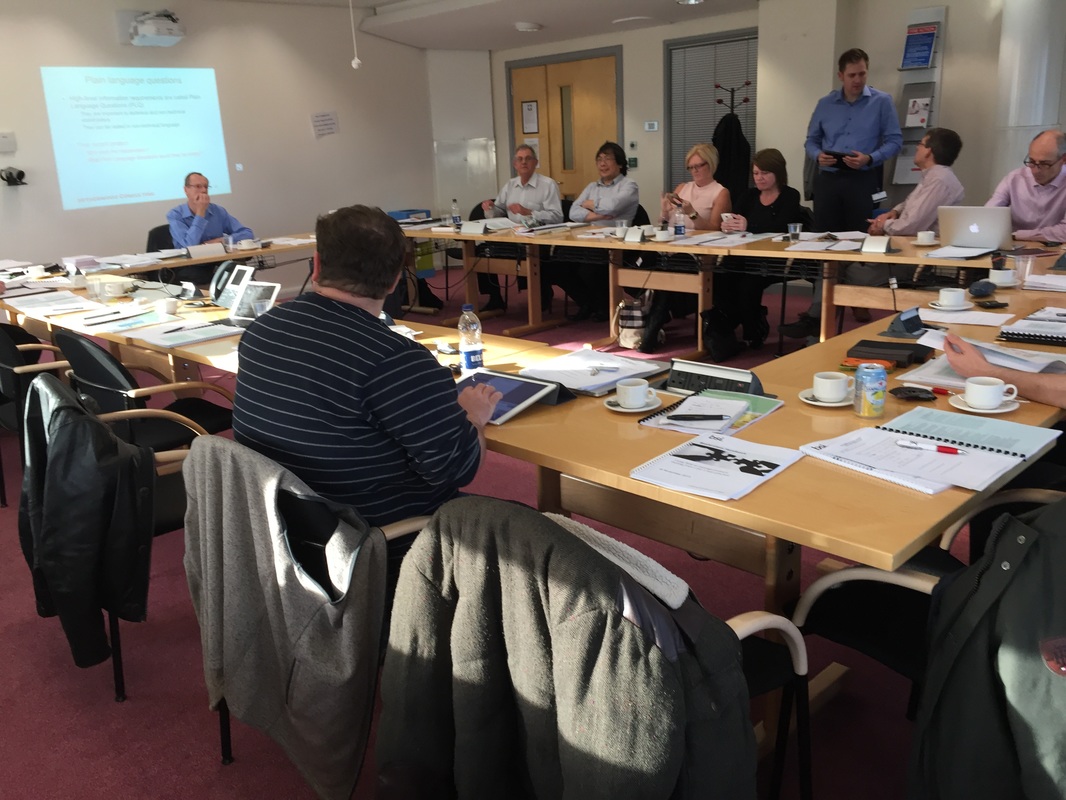
The building phase
If elevator companies are talking about BIM, they are mainly thinking about this phase; how to design the elevator and how to “get the 3D building model”. But this is just one piece of the Project Information Model (PIM) that is used during the design and construction phase.
Another important aspect of BIM is the “Softlanding phase”
This was also new to me, it defines the time from passing the built elevator to the operations team until everything is working fine. This might be a few weeks but may also take 1-3 years, depending on the complexity.
It’s all about Assets
To me, that might be my personal opinion, its all about assets. If you think about the the 3D BIM model, this is just one piece of a puzzle. At the end of the day, the elevator is installed into the building and becomes an asset.
From an organizational (the owner of the building) persective, the building phase is just the way to get an asset “in operation”.
That means elevator instructions, maintenance plans, etc. are also part of the BIM Information, in particular as part of the AIM (Asset Information Model).
The final phase, the breakdown phase, might be the latest stage of the asset.
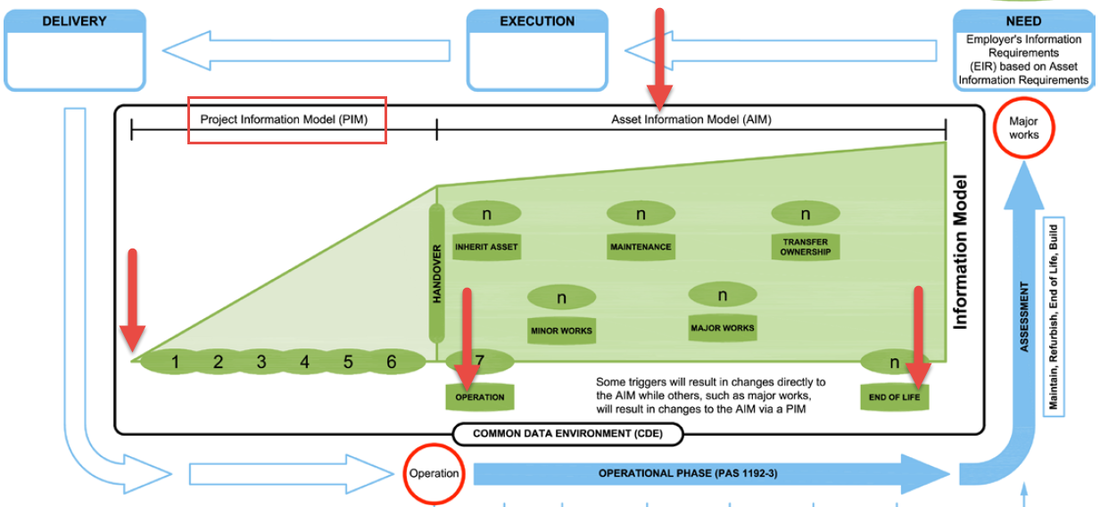
Image from the PAS 1192-3, (C) bsi. 2014
The green area defines the information (incl. 3D information) during the lifetime of the asset. Phase 1-6 are the different construction phases where most of the information is produced (Project Information Model (PIM) phase). During operations additional information (like maintenance data) is collected about the asset (elevator) and added to the AIM.
“Moving from a product modeling world to a process modeling world”
This was one of the overall messages by the second trainer Brian Atkin.
This masterclass explained the new BS 8536-1:2015 standard about “Briefing for Design and Construction”
It adresses 2 points:
- the final operations team (e.g. facility managers) should be involved in early stages
- a commitment of the design and drafting team for an appropriate softlanding phase
To the elevator industry that could mean: “Flawless start-up on an elevator system is achievable – it just needs to be a priority”, a derived message from Brian.
As a result all elevator companies should have a BIM expert, who could part of a “Working together” team and takes care on the proper integration. This BIM champion can also guide collegues for the new challenges that are arising here.
Thanks to Brian Atkin for this first hand information.
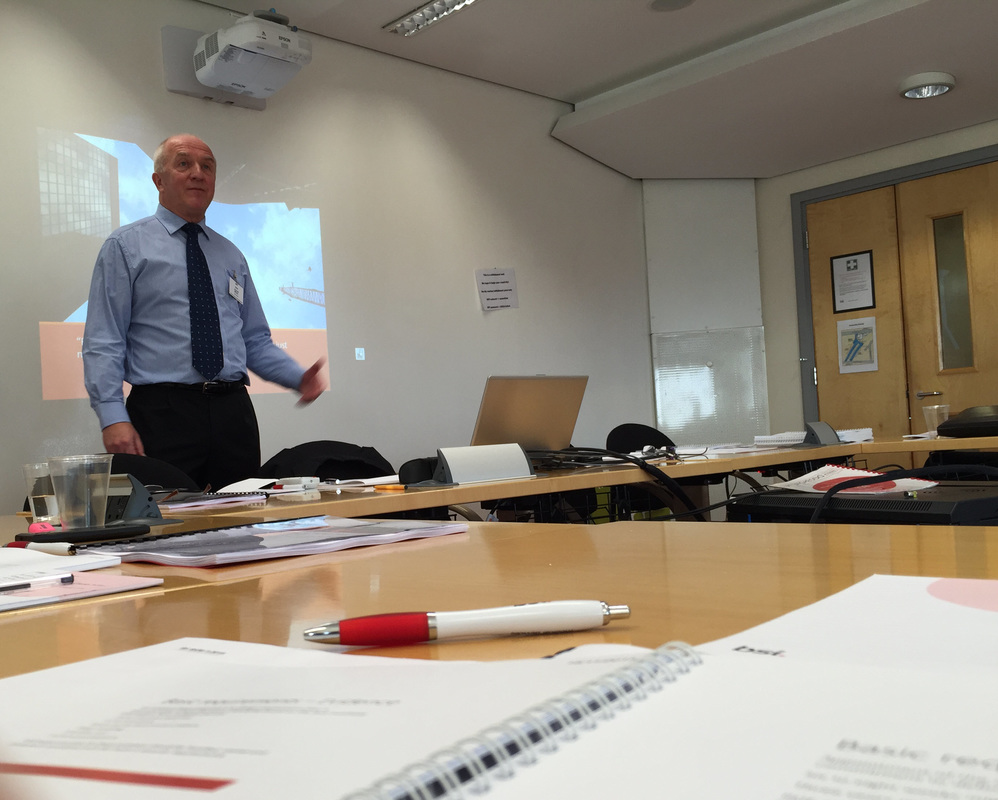
Brian Atkin, director of THE FACILITIES SOCIETY
Overall
The training is really recommended for everybody who starts with BIM. I booked 3 of 4 days. Course 4, about COBie I have to attend at a later time. Unfortunately my calender did not allow me to attend.
I learned a lot and received well structured materials.
Thanks again to David Churcher about the interesting conversations with regards to lifts (his term) and elevators (my term) 🙂
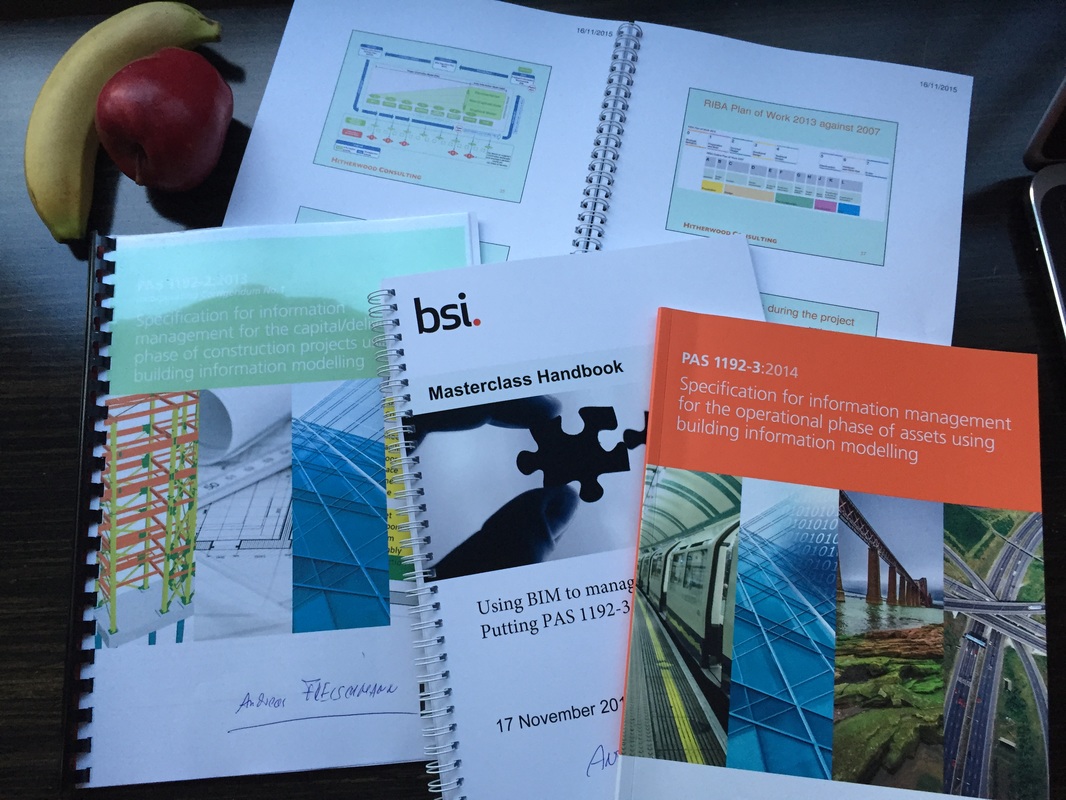

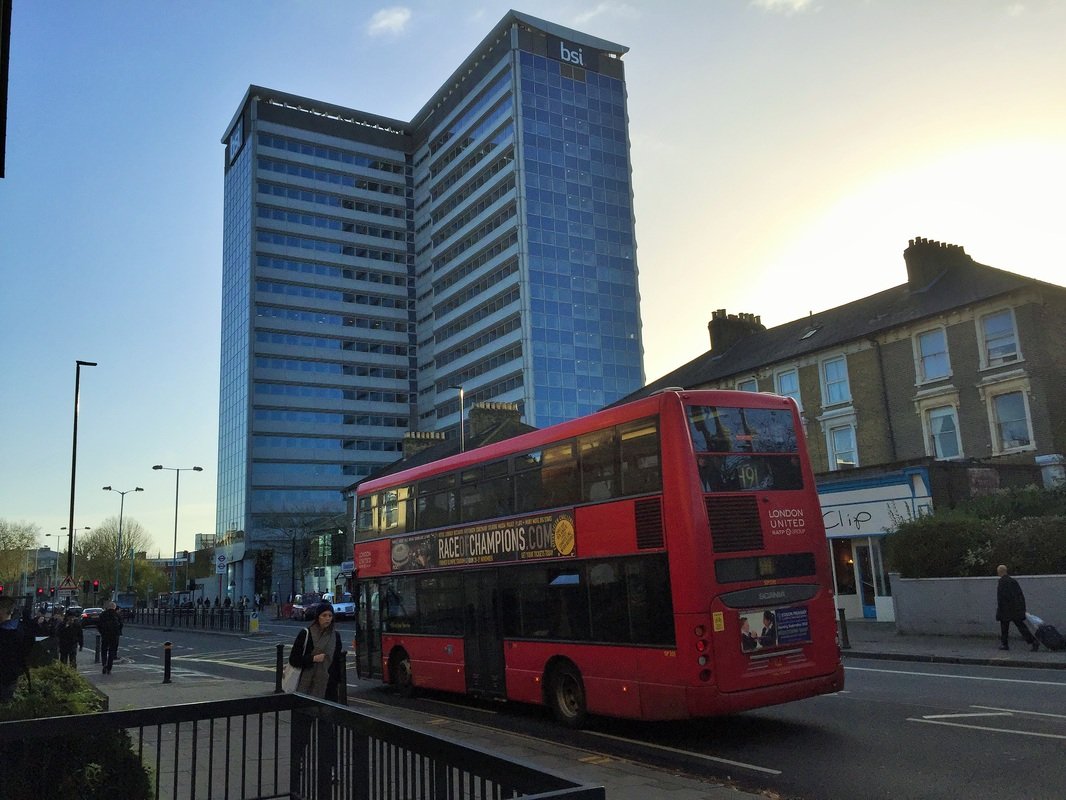
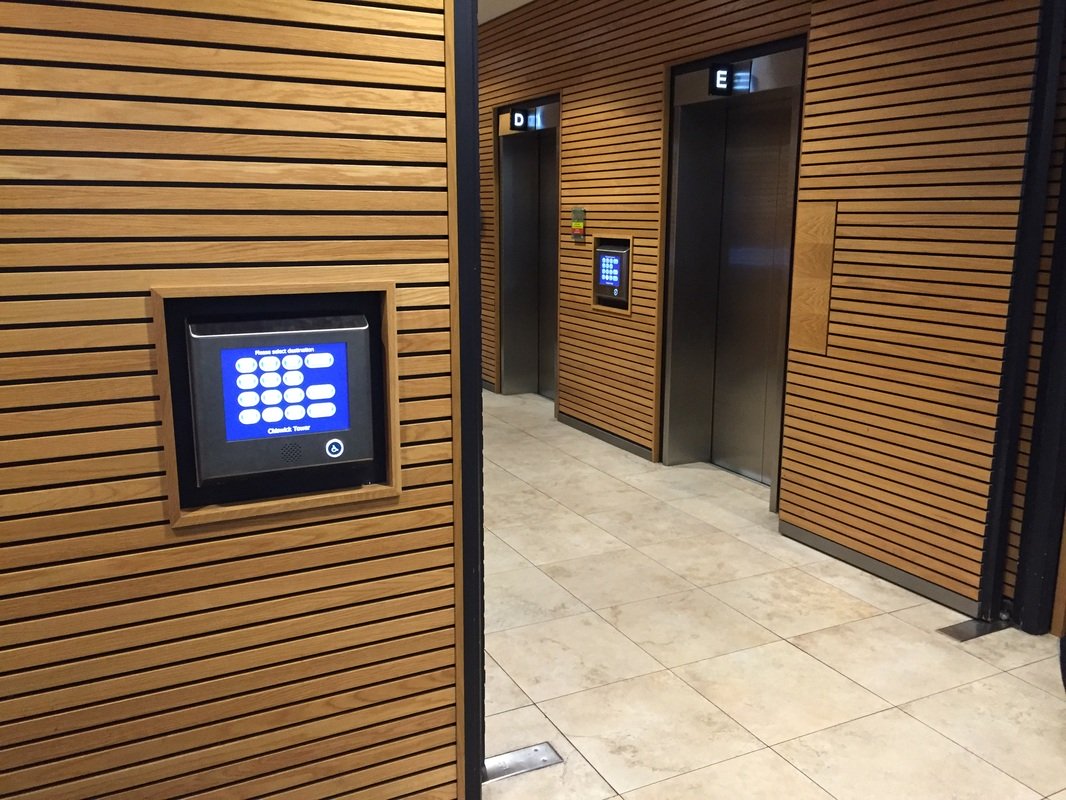
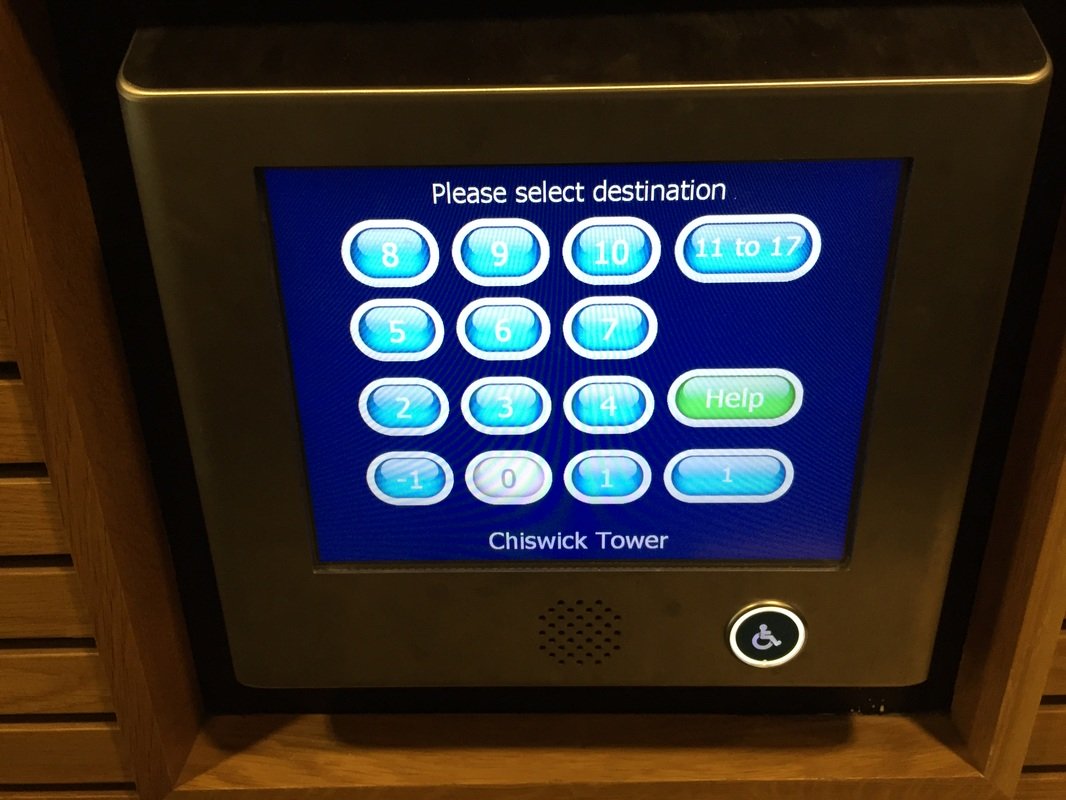

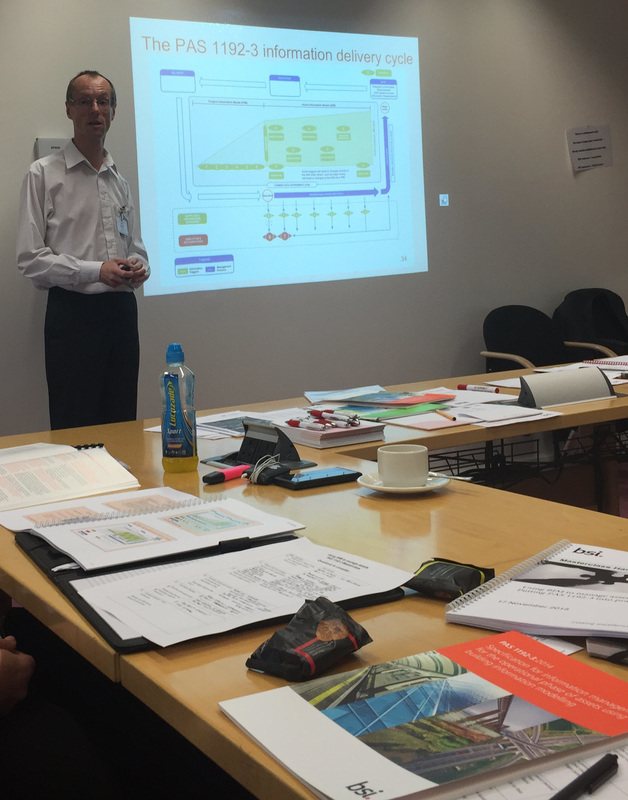
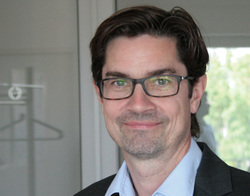 Andreas Fleischmann is the owner and CEO of DigiPara. Since more than 20 years Andreas is a known expert for elevator BIM, drawings and elevator configurations.
Andreas Fleischmann is the owner and CEO of DigiPara. Since more than 20 years Andreas is a known expert for elevator BIM, drawings and elevator configurations.